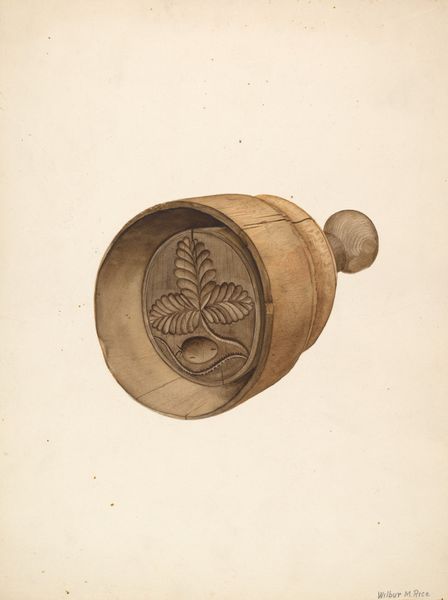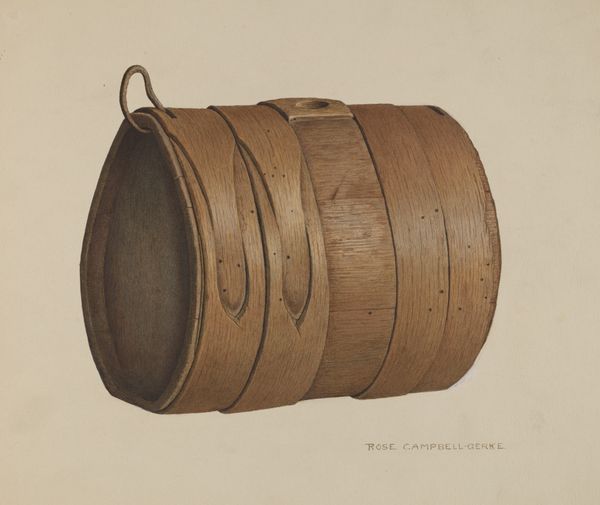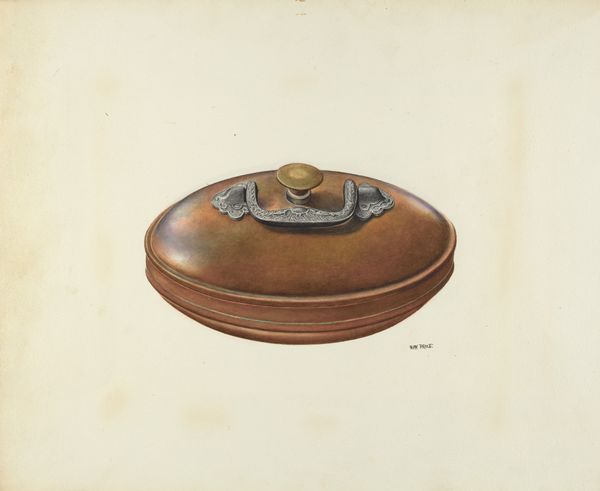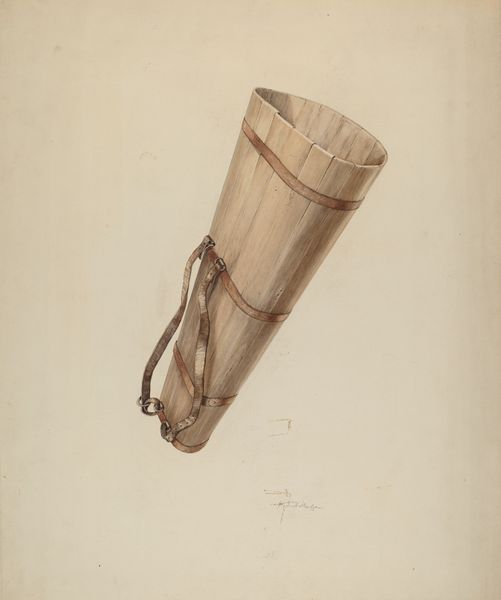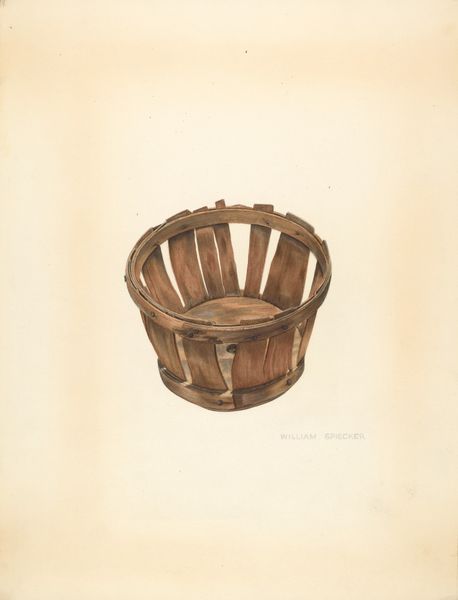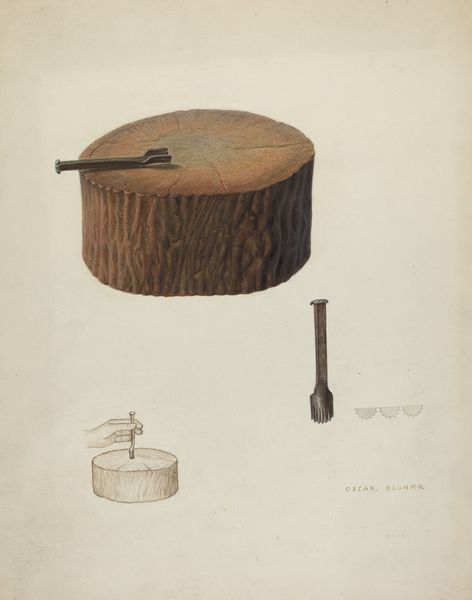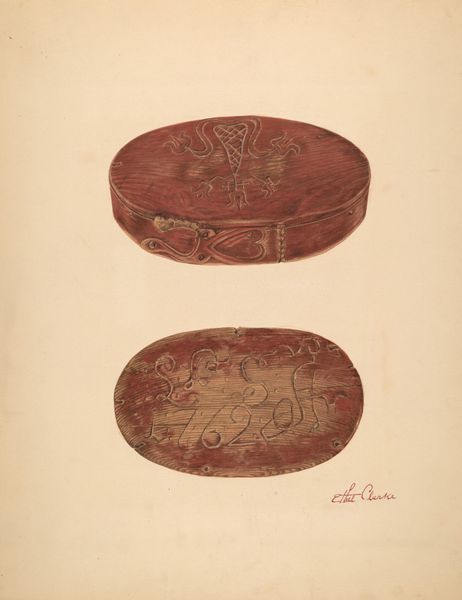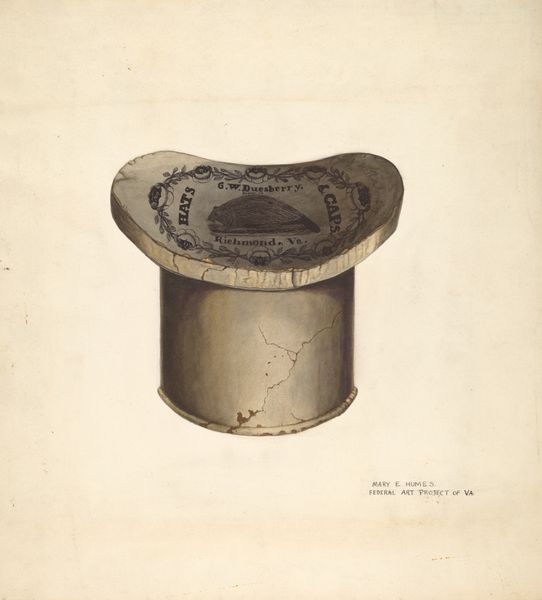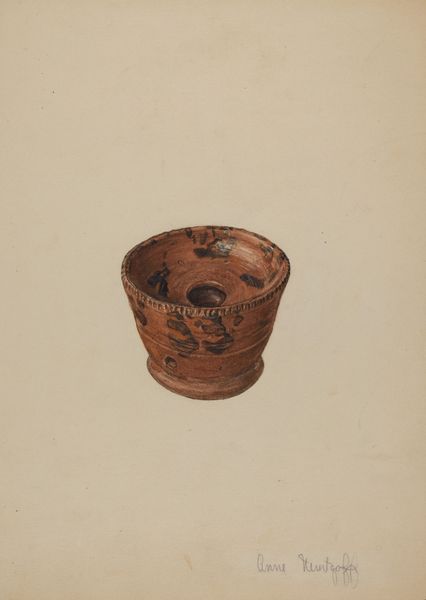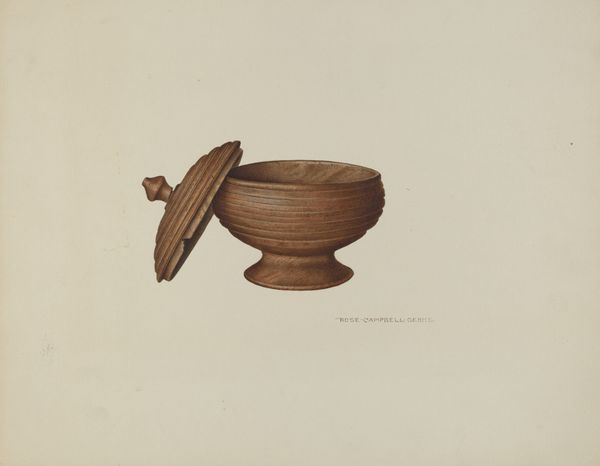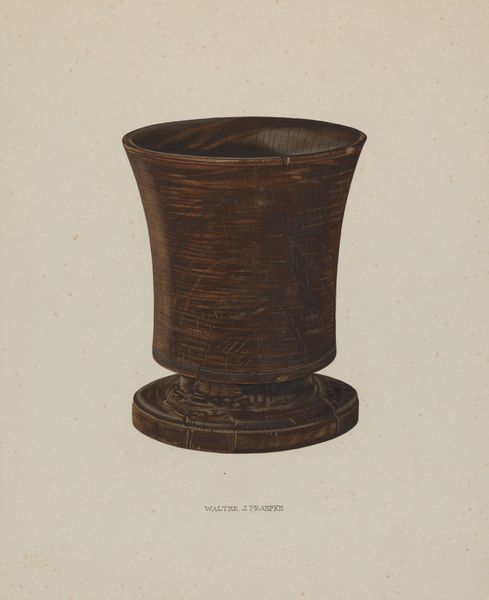
drawing
#
pencil drawn
#
drawing
#
toned paper
#
light pencil work
#
pencil sketch
#
charcoal drawing
#
possibly oil pastel
#
pencil drawing
#
underpainting
#
watercolour illustration
#
watercolor
Dimensions: overall: 45.9 x 35.6 cm (18 1/16 x 14 in.) Original IAD Object: 6 7/8" in diameter
Copyright: National Gallery of Art: CC0 1.0
Curator: We’re looking at John Koehl's "Whiskey Canteen," created around 1936, rendered in what appears to be pencil and watercolor on toned paper. Editor: My first thought is how utilitarian it feels, despite being a drawing. There's something inherently functional in its depiction, almost an advertisement for simple living. Curator: Exactly! Let's consider the object itself, a canteen for whiskey. Koehl isn't depicting some idealized landscape or heroic figure. He’s focusing on an object made for a specific purpose – sustenance, perhaps a bit of rebellion during a time of great hardship. The construction seems quite basic: wooden staves, metal bands… how was this canteen assembled, what was its history of use? The medium chosen echoes this simplicity, too. Editor: And look at the initials stamped on the lid "R.F.C.". What do you think? Company designation? Personal branding? These symbols root the object within a particular culture, perhaps even a specific workshop or maker. Someone took pride in crafting this canteen, embedding their identity right into the object. The choice of initials is striking. What if they carry some sentimental value to the artist? Curator: Fascinating point! Think about the societal function of alcohol, its presence in everyday life. Is it escape, solace, camaraderie? These materials represent a specific moment in the history of labor and consumption, an era deeply intertwined with the struggles of common people during the Depression era. How were materials sourced? What were the labor practices involved in its construction? Editor: Consider the circular shape. It reminds me of cyclical themes, of return and reliance. The slightly worn condition suggests use. The image holds memory – of journeys, shared moments, or solitary reflections. The tonal quality, the muted colours, adds to the sense of nostalgia and history, carrying more weight than a brightly colored piece. It is like viewing something old being seen anew. Curator: It's all a deliberate material language, pointing us to think about more than the artistic expression; the unseen laborers that constructed it, used it, made the canteen an object for survival or to bear life easier during hard times. The entire scene tells a great deal of things based on small elements. Editor: Absolutely, that shift to look into the details, it helps in appreciating the symbolic power held by even the most unassuming image of what seems to be only a simple drinking device.
Comments
No comments
Be the first to comment and join the conversation on the ultimate creative platform.

